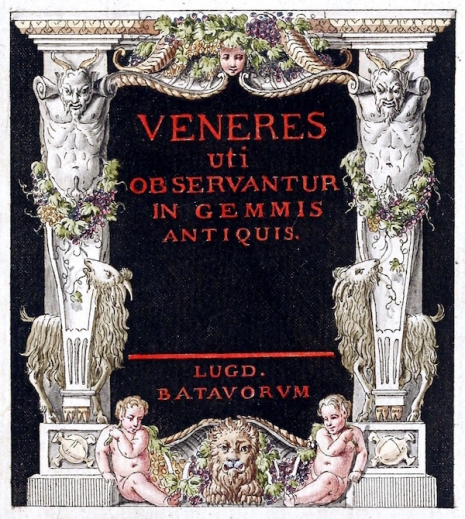
This vintage porn is all about cocks. Big cocks, small cocks. Permanently engorged cocks. Cocks to lead a goddess’s chariot. Cocks to ride into battle. Cocks that even look like Donald Trump.
They’re everywhere. Lurking in the undergrowth, hiding in baskets of fruit, frightening the horses and offering gratification wherever they go.
Drawings of cocks must have been the money shot—or money etching—back in the 18th century when these illustrations were first produced. I suppose that’s why artists will always be a prerequisite to civilized society—because when the Internet implodes and electricity eventually fails, artists can still can draw porny pictures. Just like the ones gathered together by Pierre-François Hugues, the baron d’Hancarville (1719-1805), for his volume of adult entertainment Veneres uti observantur in gemmis antiquis (1785).
Pierre-François Hugues almost had as many occupations as vowels to his name. He was an art historian, art dealer, poet, ideas man, writer, collector, intermediary, charlatan, con man, profligate, and producer of pornography. In his later years, he added the title baron d’Hancarville to his name—probably as he was convinced he deserved some recognition for all the hard work he carried out during his lifetime—most notably bringing a large collection of vases to diplomat Sir William Hamilton—which was eventually sold to the British Museum in London.
d’Hancarville and Hamilton compiled an inventory of these ancient vases—tracing their history and provence back to ancient Greece and Rome. While these four volumes had a certain fame among academe—it was d’Hancarville’s work as a pornographer that was his most popular and controversial work.
Between 1771 and 1785 (years vary depending on source—but invariably between these dates) d’Hancarville produced three volumes of pornography—Monumens de la vie privée des douze Césars, Monumens du culte secret des dames romaines, and most (in)famously Veneres uti observantur in gemmis antiquis. These books mixed drawings of artworks—stones, statues, sculptures, etc.—from antiquity—usually featuring Greek or Roman gods indulging in sexual shenanigans. D’Hancarville’ provided a text to explain in an amusing manner the symbolism and myth of each image. These books proved exceedingly popular which unfortunately led d’Hancarville into serious debt—which meant he had to eventually flee his home in Naples.
Veneres uti observantur in gemmis antiquis was originally written in French with color text and plates. It was soon published in numerous pirated editions in black and white. When asked why the images in the book were so small, d’Hancarville answered the images faithfully represented the size of the original and to be any bigger “would have still been more indecent had they been otherwise.”
You can view the full color edition here.
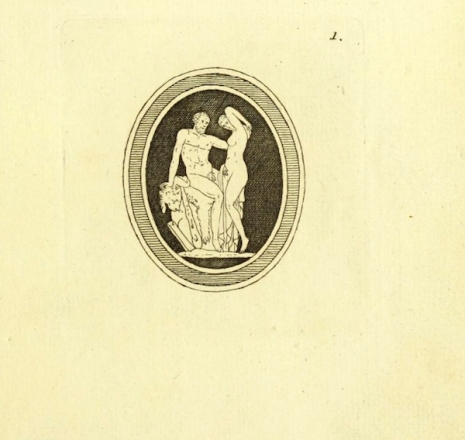
No. I.
THIS stone represents the marriage of Hercules and Hebe, or the alliance of Youth and Beauty with Courage and Virtue.
The Athenians, as Pausanias says, had an altar, which was consecrated to these two Divinities.
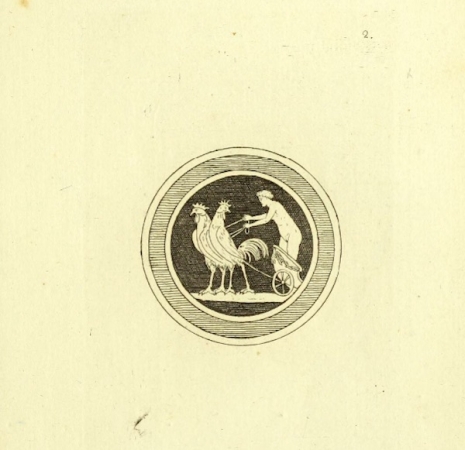
No. II.
Pigeons are undoubtedly more faithful than Cocks, but there are more valiant in love affairs than Pigeons; so Venus putting these to her chariot instead of the others, shows, that sometimes she prefers vigour to fidelity.

No. III.
Silemus and his Ass in company with Satyrs and Bacchantes. This Ass, equally wonderful in the fields of Mars and Venus, made a great figure in the expedition of Bacchus to India, and deserv’d the honours of the Apotheosis in the war of the Giants against Jupiter.
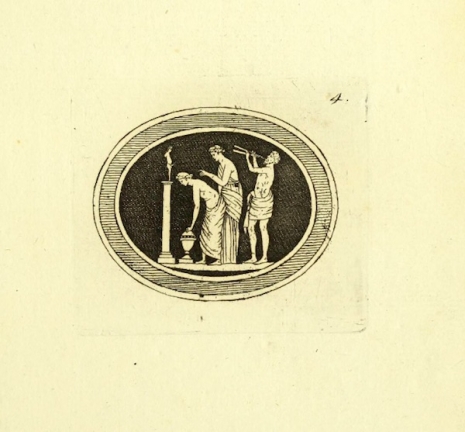
No. IV.
A Sacrifice to the God of the Gardens: the Priest, who plays upon the double flute is one of those, which Sidonius Apollinaris calls Mystae, because they were equally to serve Priapus and Bacchus: Herodotus calls them Phalliphori, or Priapus‘s carriers, because in processions their business was to the symbol of the God of Lampfacus.
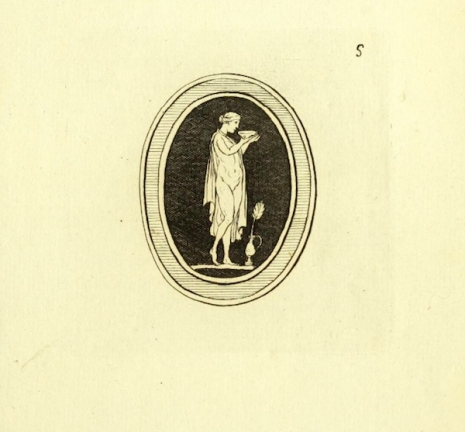
No. V.
Hebe holds the cup, with which she presented, as Homer relates, the Nectar to Jupiter....
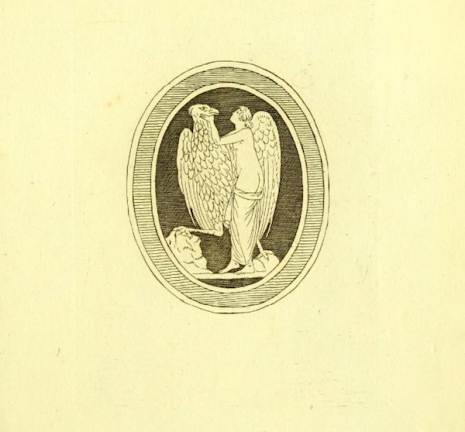
No. VI.
Jupiter in love with Ganimede, refuses the ardent solicitations of young Hebe.
Several of our readers wou’d have done otherwise, but this God was fantastic than he was powerful.
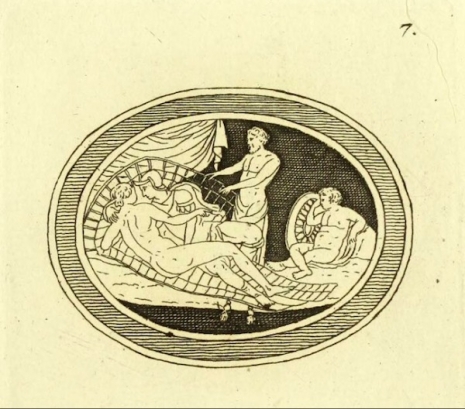
No. VII.
As this invention of nets, in which Vulcan caught Mars and Venus, oppos’d the publick tranquility, all the world condemn’d it, and no body follow’d it, otherwise, more women would have been found in the snares of the jealous, than fish in the nets of fishermen.
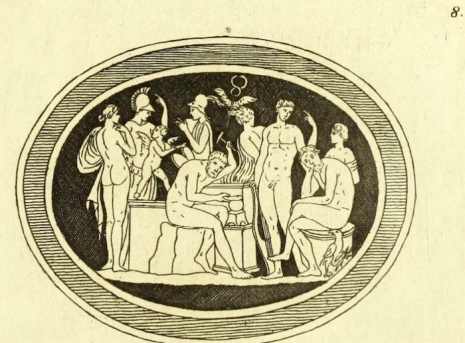
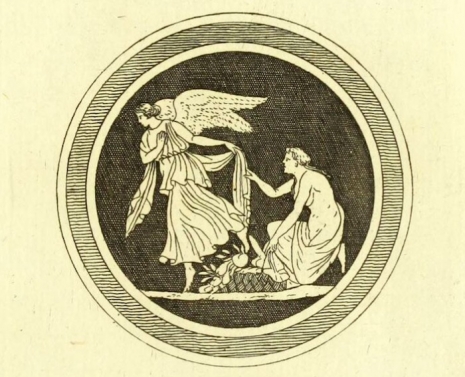
No. XIII.
Modesty turns her back on Priapus concealed in a basket of fruit, which Wantoness presents to her. In those times, as well as in ours, Modesty had wings, was young, without experience, and easily flew away.
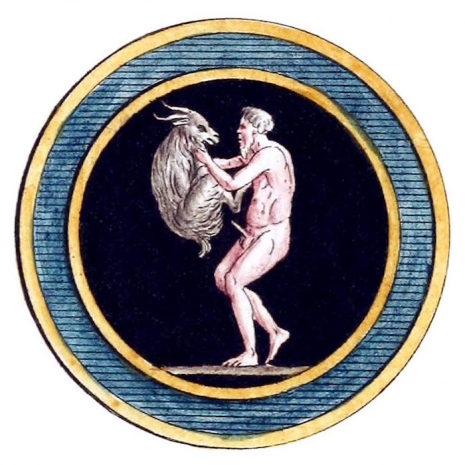
No. XIV.
We could apply to this shepherd what Dametas says to Menalcas in Virgil, Novimus, et qui te transversa tuentibus.
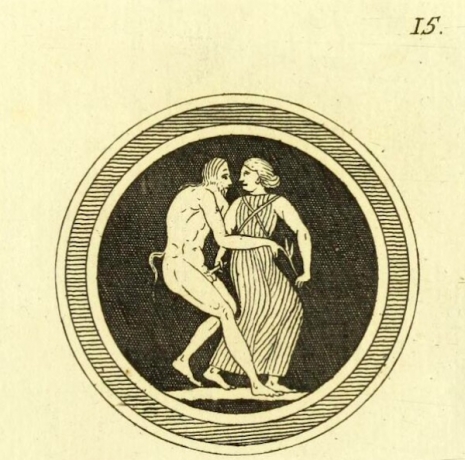
No. XV.
In this stone the Etruscan taste and style may be perceiv’d. Nothing can be more expressive than the Faun‘s figure.
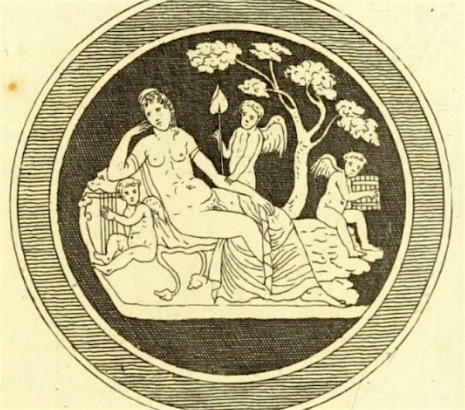
No. XVIII.
This stone belongs to the King of France, represents Hermaphroditus, with three Cupids; one of each holds the fan, which we find upon several ancient monuments.
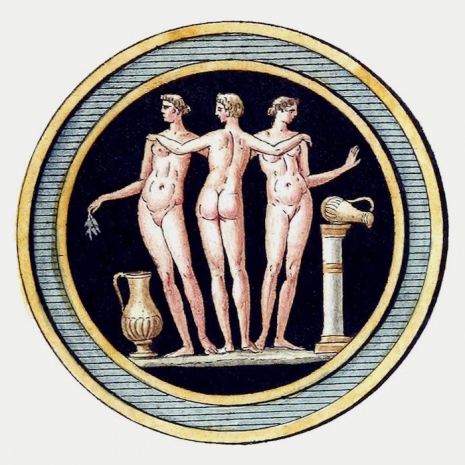
No. XIX.
Venus and the Graces.
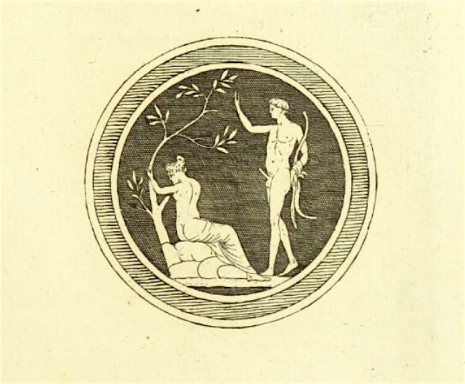
No. XXII.
Daphne is changed into a laurel tree, in order to preserve her virginity.
We should have few plants in our gardens, were they to owe their origin to the resistance which occasion’d this metamorphosis.
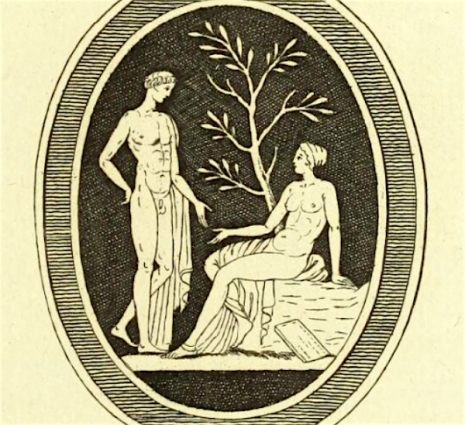
No. XXIII.
This is Sapho, at least we take it to be her by the dressing of her hair, by the book which stands by her, more by the declaration which appears to make to Phaon, who by his insensibility occasion’d her ruin.
One may easily find women with a tender hearts as Sapho‘s, but no men so savage as Phaon.
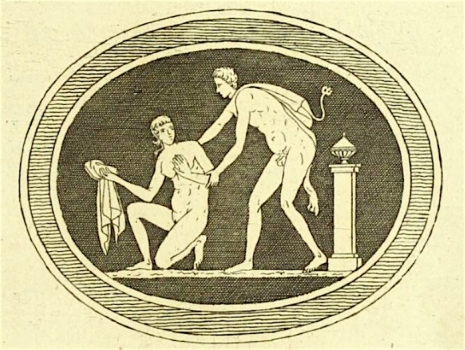
No. XXIV.
Hercules running after the 50th daughter of Thespius, after having enjoyed the other 49.
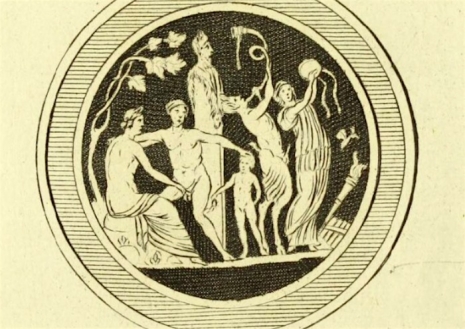
No. XXV.
Bacchus and Ariadne preparing themselves to sacrifice to Priapus in the presence of Love, Satyrs, and of Bacchantes, who look well pleas’d.
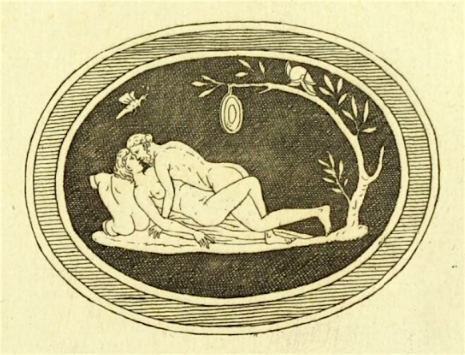
No. XXVI.
What is represented here is common to many, that it is impossible to know who it represents…
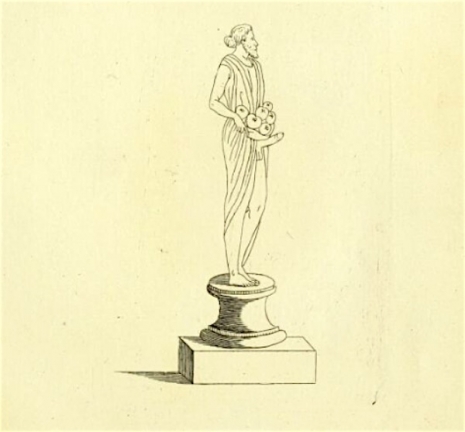
No. XXVII.
This small figure of brass represents Priapus, as God of the gardens.
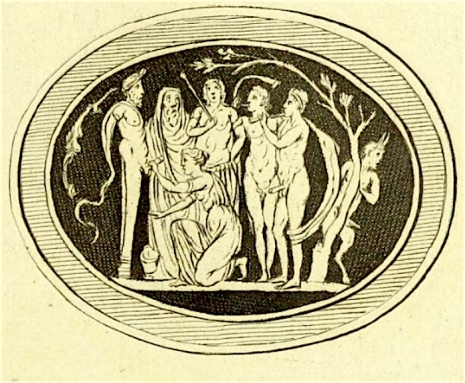
No. XXXI.
A Sacrifice to Priapus.

No. XXXIII.
The Trojan Horse.
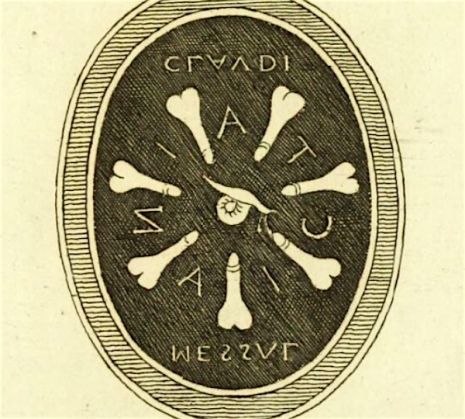
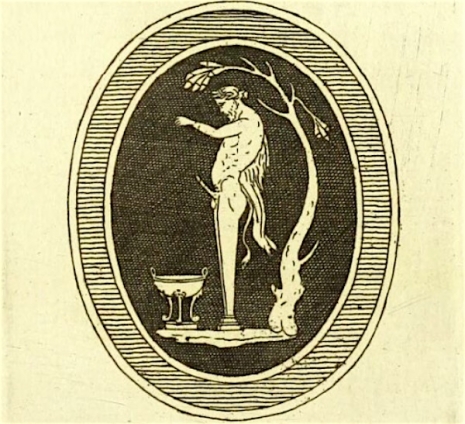
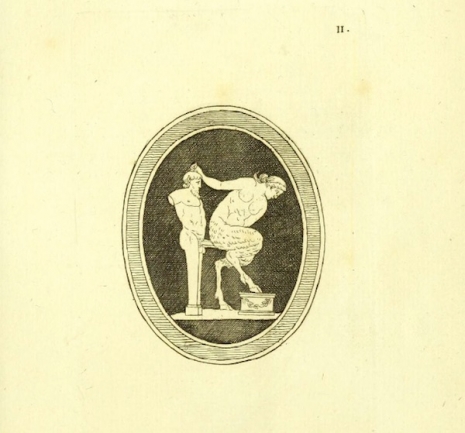
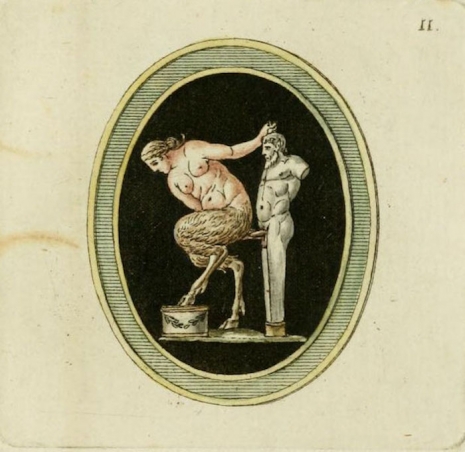

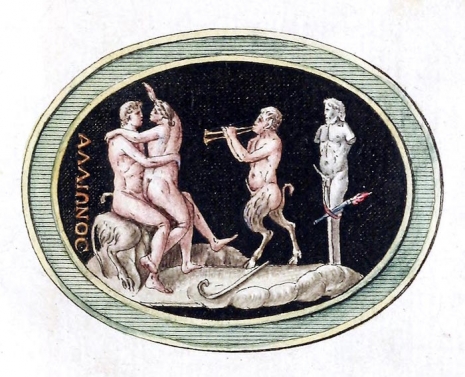
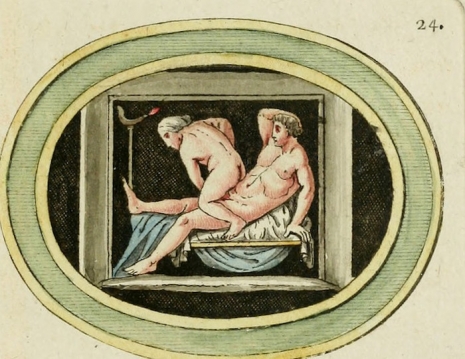
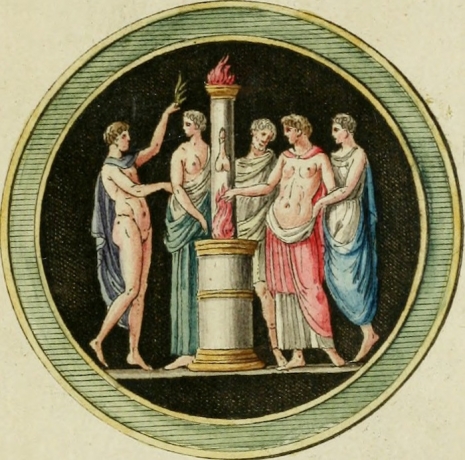
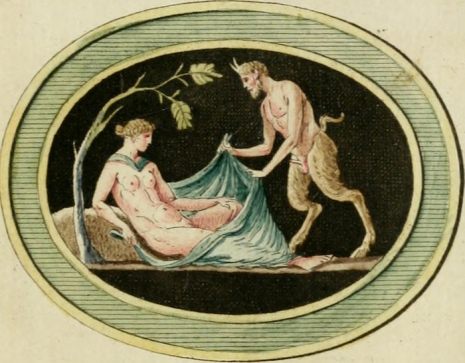


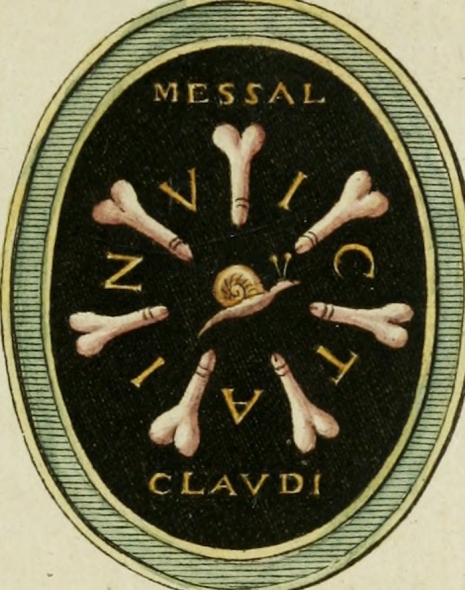
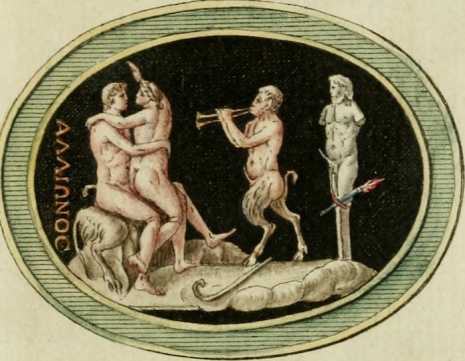
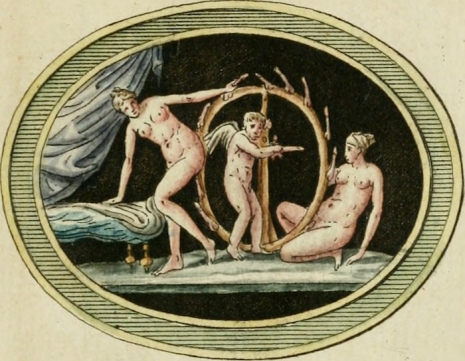
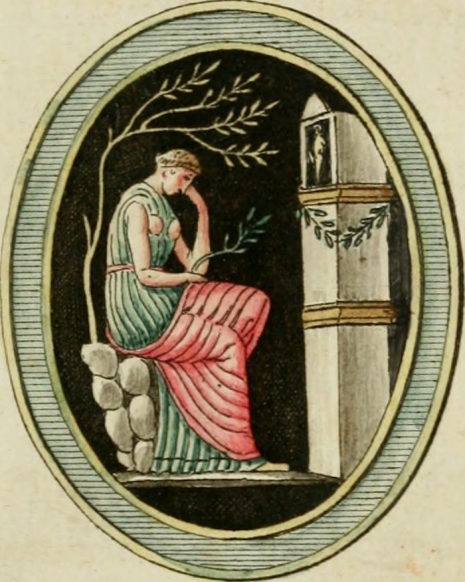
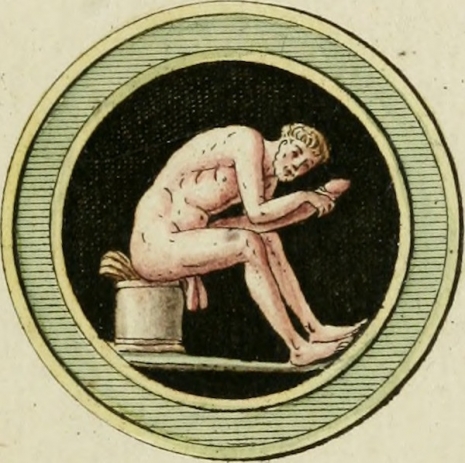
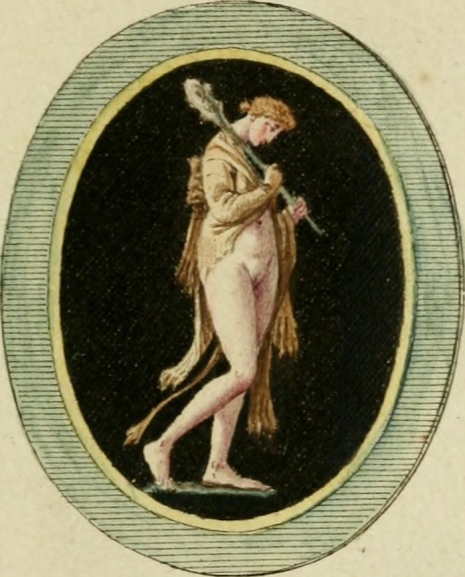
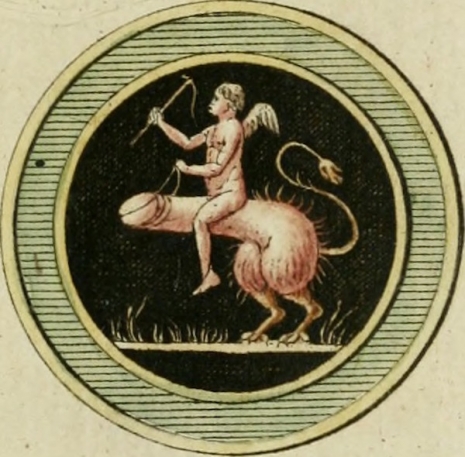
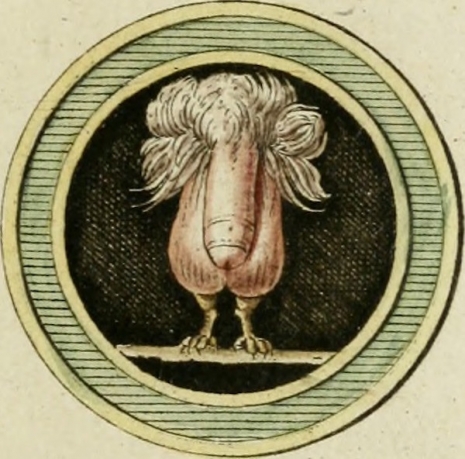
And this is obviously Donald Trump….
Via Public Domain Review, Internet Archive and Wellcome Library.